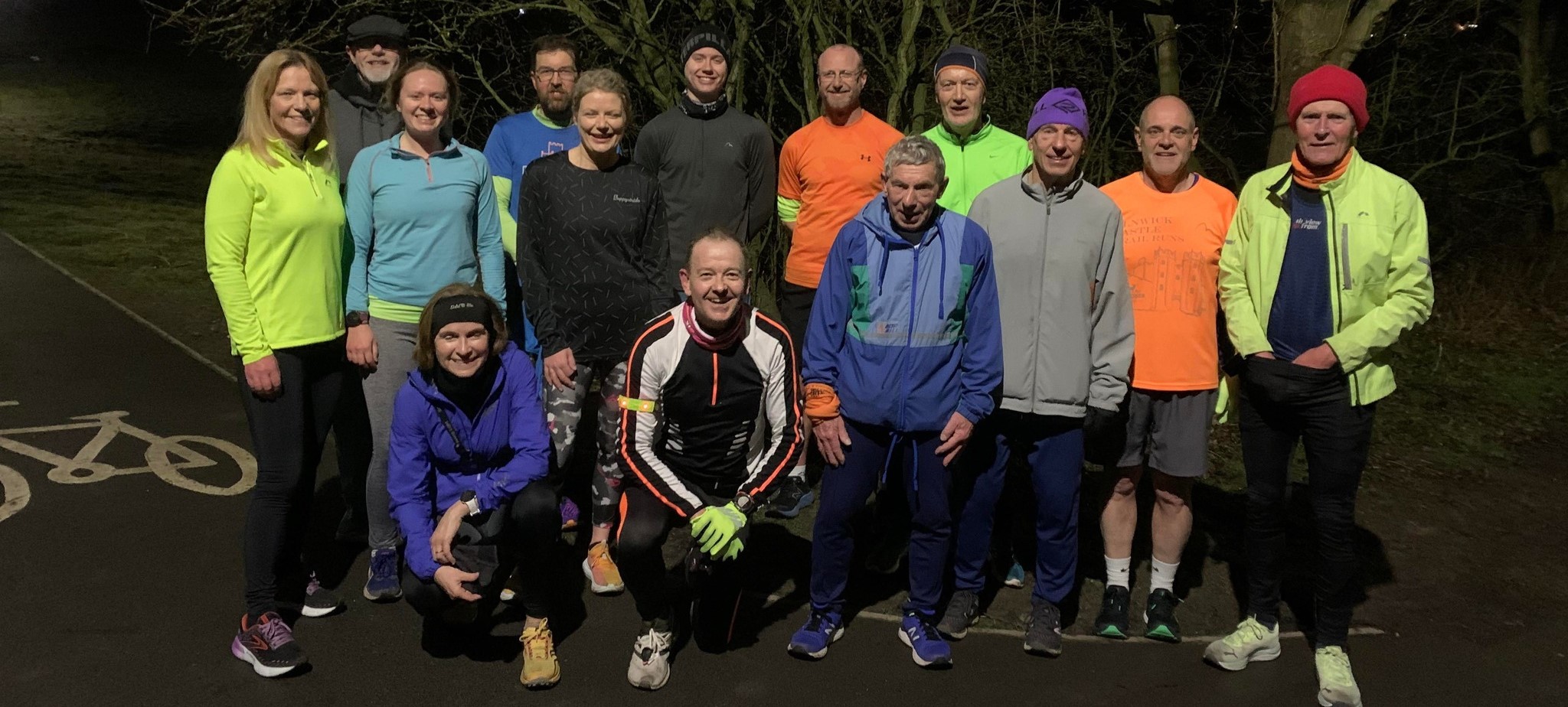Monthly Club Handicap
RESULTS, RULES AND HANDICAP CALCULATION METHODOLOGY

Courses
Results
Golden rules
It’s a fun club training session, not a race, even though we do award nominal prizes for series points victories.
Athletes are reminded that this is a time trial training session, not an official race. Athletes “compete” at their own risk – the session is unmarshalled and they need to keep aware of potential hazards and any cars, bikes or pedestrians.
The timekeepers will be volunteers from within the group. Be nice to them – they have a vital job, which sometimes involves standing in extreme weather. Timekeepers are especially open to receiving tokens of appreciation, be that verbal encouragement or chocolate… None of that will however affect their accurate recording of times…
Calculating handicaps / Predicted times
Athletes who have run in the previous series will have a predicted time calculated from a distance-adjusted weighted average of the previous handicap series results (= “ROUND #0” time). If the athlete did not run in that series, the handicap administrator will, at their discretion, use an athlete’s recent ‘race effort’ performance (i.e. from the month before the new series starts). These predicted times will be assumed to be each athlete’s “Time Trial” performances and a handicap will be calculated based upon the differences between individual predicted performances.
Any ‘new’ athlete or guest without a handicap will be allocated a start time based upon their own assessment of relative ability. They will not be eligible for points scoring on the night. Their net time recorded on the night will be used as a “Time Trial” to set a handicap for the following event, when they will be eligible for points.
In subsequent events, handicaps are calculated by reference to the best time an athlete has recorded in this series. Round #0 predicted times are ignored once a ‘competitive performance’ has been recorded. The handicap administrator reserves to right to make the judgement on what counts as a competitive performance i.e. athletes who run (for whatever reason) a deliberately slow time in the first event cannot expect to see their handicap improve, unless the slow time is reflective of the athlete’s ongoing ability e.g. they have run slow because of an injury which will likely affect their subsequent performance in the series.
On the night
The stopwatch will be started, and athletes will be instructed to start running when the watch reaches their handicap time.
It is the athlete’s responsibility to know their start time and be available on the start line at least 15 seconds before their start. Timekeepers will endeavour to call out names ahead of time, and then to count down each athlete to their start time.
Points will be awarded (20 for first, 19 for second etc, down to 1 for 20th place) based upon the finishing order i.e. based upon the ranking of who beats their predicted time by the most seconds.
Timekeepers will record the gross time and position of each athlete and pass that to the handicap administrator. Results will be published back to this group as soon as feasible.
The handicap administrator reserves the right to apply common sense in correcting any obvious mistakes in timing or position – just to be fair to everyone.
Most specifically, if an athlete is accidentally started at a different time to where their handicap said they should start, the results will be amended to place that athlete in the finishing position they would have finished in, had they ran the same net time but started at the correct handicap time.
Series formats
Both the Summer and Winter series aim to have six rounds each, one per month. Points for the series leaderboard will be accrued in every round, to reward participation.
Occasionally by exception (which will be announced before the series starts), the series points totals can be made up of “best 5 from 6”, so to allow everyone to skip an event to volunteer for timing without losing a points-scoring opportunity. If a month is cancelled (normally due to winter weather) the series totals will be calculated on an “N-1” basis where N is the number of events that actual take place.
Summer is normally an undulating 5.5km course. The Winter is a flat-ish 5km.
At the Handicap Administrator’s discretion, ‘virtual’ runs outside of the club session will be accepted and included in the results. Theses virtual runs, over the correct course, must be backed up by GPS evidence (Strava etc) and completed/submitted before the results for each round are collated and published.
RULES VERSION: UPDATED APR 2024
